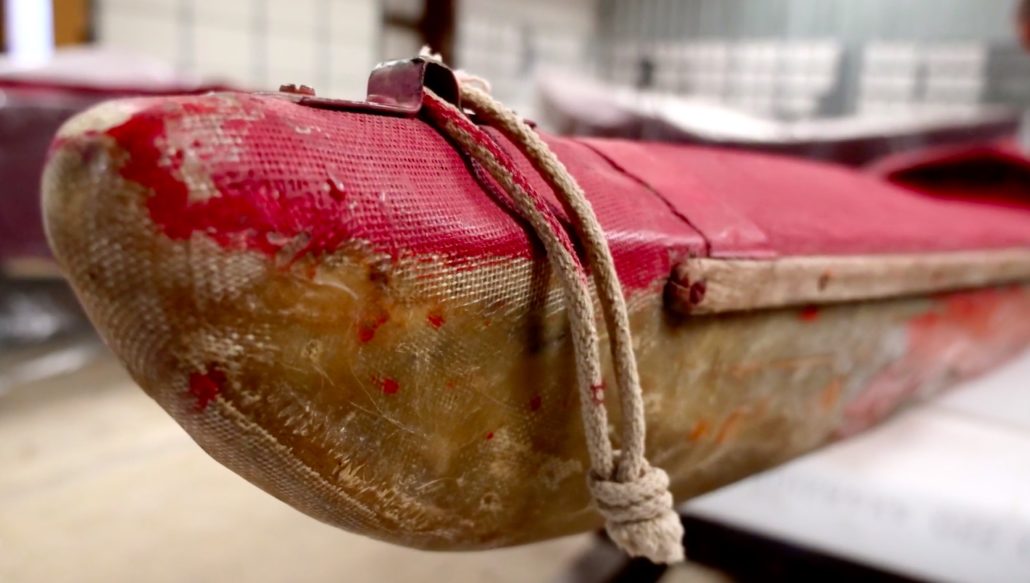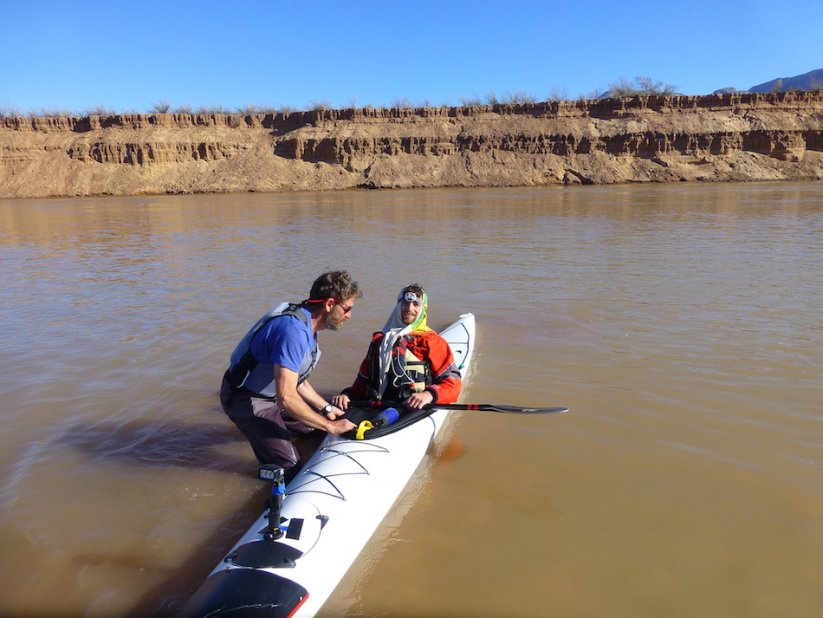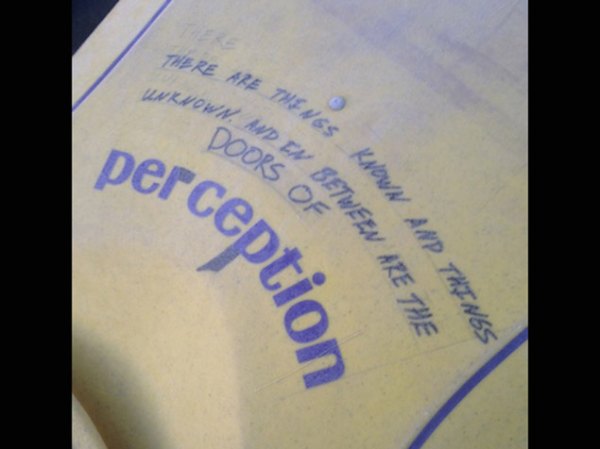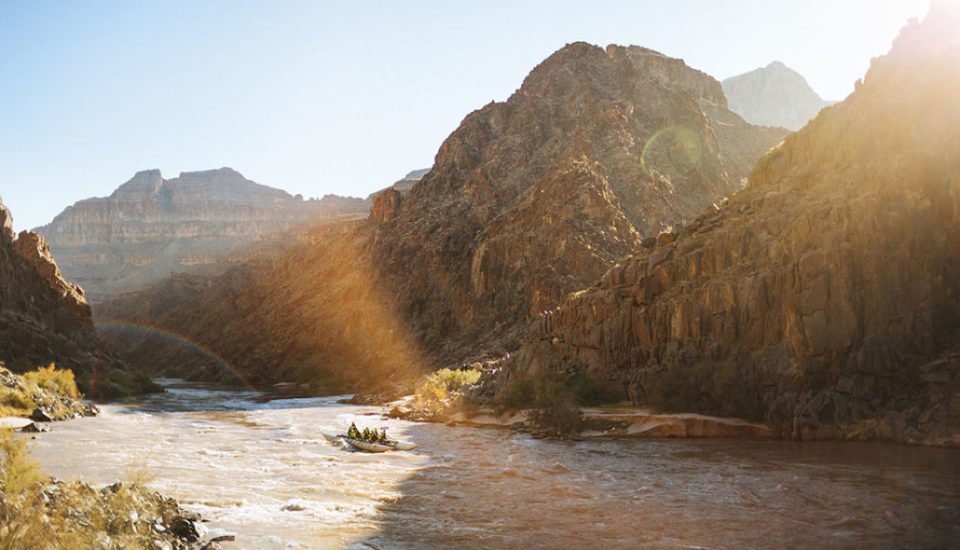Last week I lost the Grand Canyon permit lottery for the twelfth year running, which got me thinking about the great sneaks of Grand Canyon history. Among them was the late Fletcher Anderson’s solo descent in about 1977. The run trip took Anderson about 49 hours, which at the time was the fastest anyone had ever run the 277 miles from Lees Ferry to the Grand Wash Cliffs. That got me thinking about speed runs.
Kenton Grua, Rudi Petschek, and Steve Reynolds also didn’t have their paperwork in order when they rode an historic flood through the canyon in a mere 36 hours and 38 minutes. That run, in a wooden dory for chrissakes, was so off-the-charts cool, so epic in scope, and so packed full of larger-than-life characters that Kevin Fedarko wove it into one of the great river-running books of all time. The Emerald Mile came out in 2013 and sparked a revival of Grand Canyon speed attempts, some quirky, many ill-advised, and every single one of them cool.
Grand Canyon speed runs are typically ranked by elapsed time, which makes eminent sense but misses the point. Here then is a wholly subjective list of Grand Canyon speed runs, ranked only by how cool I think they are.
9.
Who: John Weisheit, John Williams, and Clyde Deal
What: Motorized rigid inflatable
When: 1993
Why: Because the Factor bailed them out
Speed Rank: 3* (35 hours, 43 minutes)
In the summer of 1993 these three boatmen charged through the canyon in a rigid inflatable sport boat with a 50-horsepower outboard hanging off the stern. They averaged 23 miles an hour until Bedrock Rapid, where they smashed the motor on a rock. Limping downstream they happened across none other than Kenton Grua, who’d skippered the oar-powered Emerald Mile to the speed record 10 years before. Grua helped the trio repair the motor, and they went on to beat the dory’s time by 55 minutes. It’s possible that another motorized craft has gone faster since. I don’t know and don’t really care. These guys made the coolness list because Kenton Grua bailed them out.
8.
Who: Ben Orkin and Harrison Rea
When: January 2015
What: Epic 18X sea kayaks
Speed Rank: 4 (37 hours and 48 minutes)
One January night in 2015, Ben Orkin and Harrison Rea bolted ATV headlights to carbon-Kevlar sea kayaks and took off in pursuit of The Emerald Mile’s record. Though relatively new to the canyon—Orkin had been down seven times before, and Rea just once—they were on pace to beat the dory’s mark until morning brought them to Crystal Rapid at mile 98. Rea ran left, into the same hole that had upended The Emerald Mile 32 years before. He cartwheeled several times, hitting a rock that cracked his delicate kayak. After repairs, the duo finished in 37 hours and 48 minutes—a little more than an hour behind the The Emerald Mile’s record, but easily the fastest kayak descent up to that time.
7.
Who: John Mark Seelig, Robbie Prechtl, Jeremiah Williams, Matt Norfleet, Kurt Kincel, Justin Salamon, Lyndsay Hupp, and Omar Martinez
When: January 2020
What: 40-foot, 7-oared inflatable Frankenstein
Why: The brotherhood of the lost cause
Speed Rank: 5 (37 hours and 55 minutes)
This was the team’s second try to claim the speed record in an oar raft. Their 2017 attempt was derailed in Lava Falls by a splintered frame and punctured tube. Still, with a moderate flow of 20,000 cfs pushing them along, they’d held a record-beating pace for 180 miles. That was no small feat, given that the kayak teams have an inherent efficiency advantage, and The Emerald Mile rode an historic flood to ride.
The 2020 crew, made up mostly of members of the U.S. Whitewater Rafting Team, knew that to have any chance at the record, everything would have to go just right. They tweaked their 40-foot cata-raft with monster-truck light bars and sliding-seat oar rigs, but the water level was always going to be a roll of the dice. It came up snake-eyes: just 14,500 cfs, and dropping. The low flow effectively doomed the effort before they’d even started. They went anyway, and for all the right reasons.
Rainbow Riders: This eight-person, seven-oared Frankenstein holds the record as the fastest inflatable ever to run the Grand on human power. Forest Woodward photo.
By the time they reached Lava Falls the moon was overhead, fat and full, casting hard shadows in its silvery light. “It felt like it was the middle of the day. It was breathtaking,” Seelig said. “We could see from shore to shore, we could see the walls, we could see every single feature. It was wild.” This time their line through Lava was perfect, and they finished with the fastest-ever time for an inflatable boat.
6.
Who: Bob and Jim Rigg
When: 1951
What: Wooden dory
Why: The first true speed descent
Speed Rank: 7 (52 hours and 41 minutes)
In 1951 brothers Bob and Jim Rigg of Grand Junction, Colorado made the first non-stop speed run of the Grand Canyon. Launching their wooden dory into a roaring flow of 43,100 cfs, the brothers finished in 52 hours and 41 minutes.
5.
Who: Walter Kirschbaum
When: 1960
What: 14-foot home-built muslin kayak
Why: First to kayak the entire Grand Canyon without portaging
Speed Rank: Unranked (6 days)
When Walter Kirschbaum first inquired about a permit to run the Grand Canyon, he was summarily denied because in 1959, no one at the Park Service thought a kayaker could survive in the canyon. According to Grand Canyon historian Tom Martin, the request culminated in a 30-minute shouting match between NPS Ranger Dan Davis and Kirschbaum’s attorney friend Ty Dines, and a challenge of sorts: If Kirschbaum could run Cataract Canyon in his kayak, he was welcome to attempt the Grand.
Kirschbaum promptly made the first kayak descent of Cataract Canyon, which he said required more skill than any rapid in the Grand Canyon at 40,000 cfs. He did this in a 14-foot kayak he and his wife Ruth built in their Denver home and lowered out of their attic window. It was made of muslin and resin, with no seat or footpegs. Though his wasn’t a speed attempt per se, Kirschbaum paddled that lumpy red cigar through the Grand Canyon in six days flat, becoming in the process the first to kayak the Canyon without portaging and the only person ever to do so before the before the Glen Canyon Dam.

Detail of the kayak Walter Kirschbaum made of wood, muslin and resin, and used for the first descent of the Grand Canyon, Cataract Canyon and the Black Canyon of the Gunnison, among others. Screenshot from a Tom Martin video.
4.
Who: Ben Orkin
What: Epic 18x sea kayak
When: January 2016
Why: Speed and Resilience
Speed Rank: 1 (34 hours, 2 minutes)
A year after his near-miss with Harrison Rea, Ben Orkin returned to Grand Canyon for a solo crack at the record. Again he used a carbon-Kevlar sea kayak equipped with lights and stocked with 36 energy bars. This time however, he received a surprise at the put in. It was an email from Ben Luck, one of a quartet of kayakers who had just surpassed The Emerald Mile’s 33-year-old record. Orkin saw the message a few minutes after midnight as he was preparing to launch. It read: “Wanted to let you know that a group of four of us put in on Thursday and completed the river in 35 hours. Just felt like you should know. Best of luck out there.”
Orkin didn’t even know anyone else was attempting the record. Now the goalpost had moved more than an hour and a half in the wrong direction. He took off at a blistering pace, and by midway was on track to beat the new record by about two hours. But there’s a reason the name Lava Falls is heard so frequently in speed-run chronicles. It comes after 180 miles, around the second midnight of most attempts—the Grand’s most formidable rapid, in the dark, with 20 or more hours of accumulated fatigue. Orkin flipped in the entrance wave, missed his roll and felt his boat getting plastered against an infamous boulder known as Cheese Grater Rock. He kicked out of his boat and washed into a swirling eddy, where he spun for 20 minutes before finally mustering the strength to kick to shore with his waterlogged boat.
The mishap cost Orkin about an hour, but when he looked at his watch he realized the record was still in reach. He paddled the last 97 miles in about 13 hours, passing the Grand Wash Cliffs in the all-time record time of 34 hours, 2 minutes.

Orkin after his record-setting Grand Canyon cannonball. Photo by Mari Orkin.
3.
Who: Fletcher Anderson
When: Circa 1977
What: Fiberglass wildwater racing kayak
Why: The OG kayak speed run
Speed Rank: 7 (49 hours)
In 1978, The Mountain Gazette published an anonymous narrative titled “The Big Sneak,” telling of an illicit solo kayak run through the Grand Canyon in the unprecedented time of just 49 hours. The magazine teased the story in the table of contents as follows: “In which our anonymous author kayaks the Grand Canyon without a permit, breaks the solo record, eats freeze-dried food without water, has some interesting hallucinations and lives to tell about it.”
The correspondent was Fletcher Anderson, a marathon skier, climber, kayaker and all-around character out of Telluride, though his identity remained an open secret until 2005, when the plane he was flying clipped a gauging cable over the Snake River in Wyoming. After his death, the Gazette re-published “The Big Sneak” under Anderson’s byline. Paddling a wildwater racing kayak, Anderson made the run in less than half the time set by his friend and mentor Walter Kirschbaum. While the precise date of the run remains in question—Anderson was deliberately vague about that and some other details—there can be no question that his under-the-radar solo dash is one of the coolest speed runs of all time.
2.
Who: Kenton Grua, Rudi Petschek, and Steve Reynolds
What: Wooden dory, The Emerald Mile
When: 1983
Why: They set a speed record that stood for nearly 33 years – in a dory
Speed Rank: 4 (36 hours, 38 minutes)
In 1983, as Lake Powell threatened to overtop the dam and engineers released as much water as they dared into Grand Canyon—some 72,000 cubic feet per second—three Grand Canyon boatmen put on to the maelstrom in The Emerald Mile, a once-wrecked wooden dory rebuilt by the mission’s instigator, the late Kenton ‘Factor’ Grua. They took turns rowing day and night, and finished the 277 miles from Lee’s Ferry to the Grand Wash Cliffs in 36 hours and 38 minutes.
Just as Harrison Rea would decades later, they plowed straight into the entrance hole at Crystal—a monstrous hydraulic at regular water levels, now morphed into almost unimaginable proportions. In his best-selling book about the exploit, Fedarko described the wall of water that greeted them: “Smooth and unblemished, it rose cleanly for almost 30 feet, and inside its whiteness there was an aspect of deep green. But the top wasn’t glassy. It was enraged and seething—a churning fury created by the wave’s breaking apex.”
Or, as Grua later told told his friend Lew Steiger, “It wasn’t a regular hole. It was perfection in a hole.”
The dory cartwheeled and pirouetted, scattering the three men and their possessions into the river, which finally shunted most of the pieces into a boiling swirl called Thank God Eddy. There they righted the dory and peeled back into the flood to finish the most-storied Grand Canyon descent of all time.
1.
Who: Team Beer, a/k/a Matt Klema, Nate Klema, Ben Luck and Ryan Casey
When: January 2016
What: Plastic downriver kayaks (3 Pyranha Speeders and a Perception Wavehopper)
Why: Sportsmanship, and fried chicken
Speed Rank: 2 (Matt Klema in 35 hours, 5 minutes)
The Emerald Mile’s speed record would stand until January 2016, when a crew of underground kayaking legends pulled a permit and made an off-the-couch speed run in borrowed kayaks. Scooping water directly from the river and fortified with a three-pound bucket of fried chicken, all four members of Team Beer beat The Emerald Mile’s mark, with Matt Klema first across the line in 35 hours, 5 minutes.
The run itself provided little drama. None of the quartet so much as rolled, and other than their unusual choice of power-food, the descent was as nondescript as any moonlight run through a six-million-year-old gash in the earth’s crust could be. Just three days later, Orkin would lower the record to 34 hours, 2 minutes, but it’s what happened in those three days that makes Team Beer’s speed descent the coolest of them all.

Matt Luck’s borrowed kayak was inscribed with this quote from Aldous Huxley.
First was their email to Orkin alerting him of the new time to beat. Next was their reaction when Orkin beat their mark. “It’s good for everyone,” Matt Klema told writer Zak Podmore, who broke the news. “[Orkin] gets the fastest time and we got to break the [Emerald Mile‘s] record. And more importantly, we got to have this amazing river experience.”
River trips have a way of putting things into perspective. “We knew that somebody was going to be faster eventually, so what’s the difference if our record lasted three decades or three days?” Luck said. “We crushed what we went down there to do in borrowed plastic boats with our best friends — and we did it straight off the couch in true Team Beer style. That’s what matters to me.”
Now that’s cool.
* If you use a motor, you get an asterisk after your time. Also, speed rankings include only the trips in this article and are not comprehensive. For example, Grua, Petschek, and Wally Rist made a dory run in 1980 in just under 48 hours, and the USA rafting team clocked 37 hours 24 minutes in their 2017 attempt.

